- Technique for Increasing Strawberry Harvest
- Planting in Raised Beds
- Applying Mulch
- Regular Watering and Fertilizing
- Conclusion
- How to Boost Your Strawberry Yields
- 1. Choose the right variety
- 2. Provide optimal growing conditions
- 3. Practice proper spacing
- 4. Implement regular fertilization
- 5. Mulch your strawberry beds
- 6. Remove runners
- 7. Implement proper pest and disease management
- 8. Provide adequate irrigation
- 9. Harvest ripe berries promptly
- Improve Your Strawberry Harvest with this Easy Agrotechnical Method
- Step 1: Selecting the Right Variety
- Step 2: Preparing the Soil
- Step 3: Providing Adequate Sunlight
- Step 4: Proper Plant Spacing
- Step 5: Regular Watering
- Step 6: Fertilizing
- Step 7: Controlling Weeds and Pests
- Step 8: Mulching
- Step 9: Pruning Runners
- Step 10: Harvesting at the Right Time
- Increase Yields of Strawberries by 2-3 Times
- 1. Mulching
- 2. Proper Plant Spacing
- 3. Regular Fertilization
- 4. Adequate Watering
- 5. Regular Pruning
- 6. Pest and Disease Management
- 7. Proper Harvesting
- Efficient Agrotechnical Technique for Improving Strawberry Harvest
- 1. Proper Soil Preparation
- 2. Selecting the Right Varieties
- 3. Planting and Spacing
- 4. Adequate Watering
- 5. Fertilization
- 6. Mulching
- 7. Pest and Disease Management
- 8. Harvesting Tips
- Maximize Your Strawberry Yields with this Simple Agrotechnical Method
- Introduction
- Step 1: Selecting the Right Variety
- Step 2: Proper Site Selection
- Step 3: Preparing the Soil
- Step 4: Planting and Spacing
- Step 5: Mulching
- Step 6: Regular Watering and Fertilizing
- Step 7: Pest and Disease Control
- Step 8: Proper Harvesting Techniques
- Conclusion
- Easy Way to Increase Your Strawberry Harvest by 2-3 Times
- Introduction
- Step 1: Proper Site Selection
- Step 2: Planting and Spacing
- Step 3: Mulching
- Step 4: Regular Watering
- Step 5: Fertilization
- Step 6: Pruning and Training
- Step 7: Pest and Disease Control
- Step 8: Harvesting
- Conclusion
- Enhance Your Strawberry Yields with this Agrotechnical Technique
- The Technique: Vertical Strawberry Gardening
- The Benefits of Vertical Strawberry Gardening
- How to Set Up Your Vertical Strawberry Garden
- Conclusion
- Question-answer:
- What is the agrotechnical technique mentioned in the article?
- How does vertical gardening help to boost strawberry harvest?
- Can I use vertical gardening for other crops besides strawberries?
- Does vertical gardening require any special equipment?
- Are there any disadvantages to using vertical gardening?
- How long does it take to see the results of vertical gardening on strawberry harvest?
- Video: HOW to PLANT and GROW STRAWBERRIES, plus TIPS for growing strawberries in HOT CLIMATES
Are you a strawberry lover? Do you dream of having a bountiful strawberry harvest from your garden? We have some great news for you! There is a simple agrotechnical technique that can significantly increase your strawberry yields. By following this technique, you can double or even triple the amount of strawberries you harvest every season. Read on to learn more about this easy and effective method.
One of the key components of this agrotechnical technique is proper spacing. Planting strawberries with the right spacing between each plant is crucial for their healthy growth and abundant fruit production. By providing enough space for each strawberry plant, you allow them to develop strong root systems and maximize their access to nutrients and water in the soil.
Another important aspect of this technique is regular pruning. Pruning strawberries helps maintain the plant’s vigor and encourages the growth of more flowering stems. When you prune your strawberry plants, you remove the older and weaker stems, allowing the plant to focus its energy on producing new and healthier stems. This results in more flowers and, ultimately, more strawberries.
Did you know? By applying this agrotechnical technique, strawberry growers have reported increases in yields by 2-3 times compared to traditional methods.
In addition to proper spacing and regular pruning, this agrotechnical technique also involves providing adequate sunlight and water to your strawberry plants. Strawberries thrive in full sun, so make sure to choose a sunny spot in your garden for planting. Water your strawberry plants consistently to keep the soil moist but not overly saturated. This will help them develop strong roots and lush foliage, which are essential for fruit production.
So, if you want to boost your strawberry harvest and enjoy a bountiful crop season after season, give this easy agrotechnical technique a try. By following the simple steps of proper spacing, regular pruning, and providing adequate sunlight and water, you can increase your strawberry yields by 2-3 times. Get ready to taste the sweet rewards of your labor with a plentiful supply of fresh, juicy strawberries straight from your garden!
Technique for Increasing Strawberry Harvest
Strawberries are delicious and nutritious fruits that many people enjoy growing in their gardens. However, getting a bountiful strawberry harvest can sometimes be a challenge. Fortunately, there is an easy agrotechnical technique that can help you increase your strawberry yields by 2-3 times!
Planting in Raised Beds
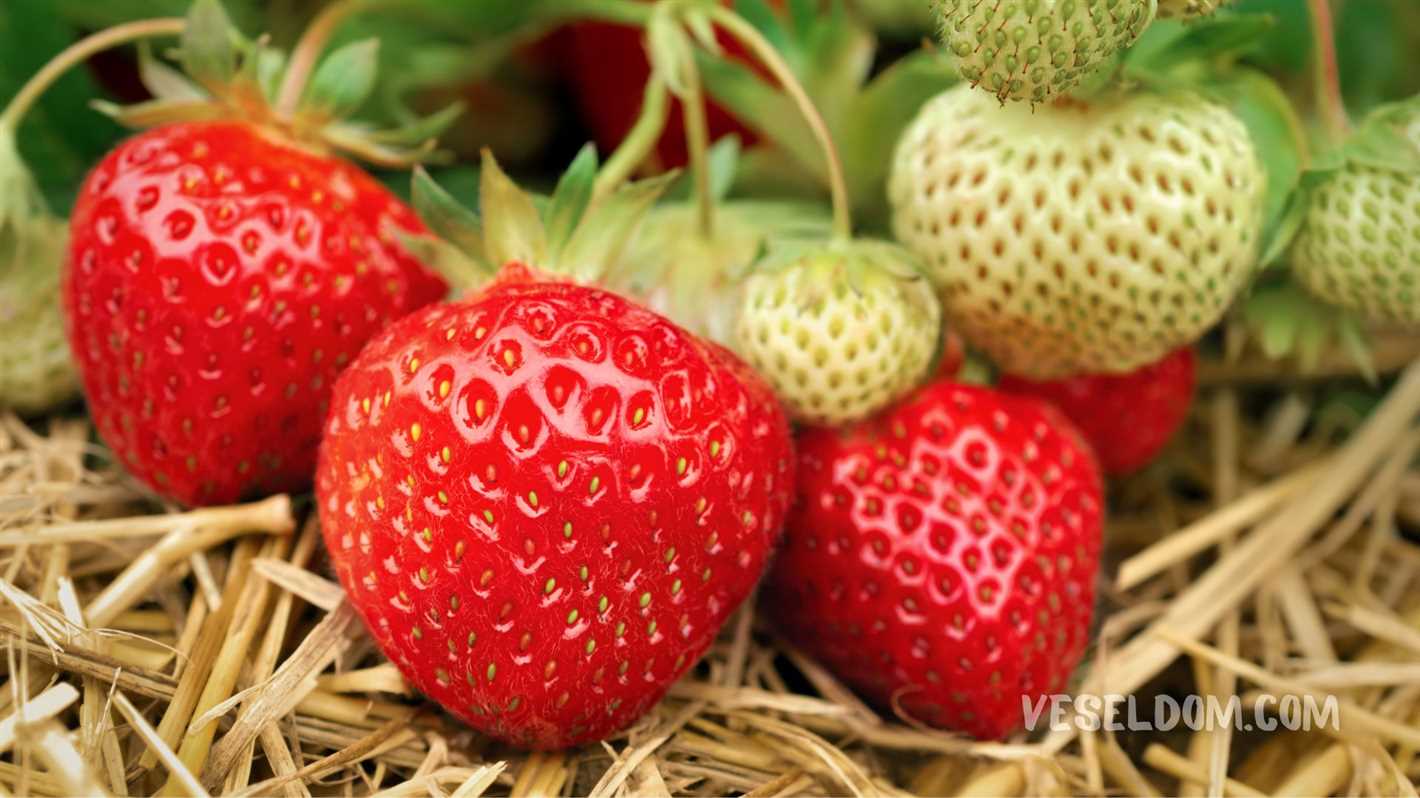
One effective technique for boosting your strawberry harvest is to plant them in raised beds. Raised beds offer several advantages for strawberry plants:
- Improved Drainage: Raised beds provide better drainage for strawberry plants, preventing waterlogging and root rot.
- Warmer Soil: The soil in raised beds tends to warm up faster in the spring, promoting earlier growth and fruiting.
- Better Air Circulation: Raised beds allow for improved air circulation around the plants, reducing the risk of diseases.
Applying Mulch
Mulching is another important technique for increasing strawberry yields. By applying a layer of mulch around the plants, you can enjoy the following benefits:
- Weed Suppression: Mulch helps to suppress weed growth, reducing competition for nutrients and water.
- Moisture Retention: Mulch acts as a barrier, reducing evaporation and helping to retain moisture in the soil.
- Temperature Regulation: Mulch helps to regulate soil temperature, keeping it cool in hot weather and insulating it during colder periods.
Regular Watering and Fertilizing
In addition to planting in raised beds and applying mulch, it’s essential to provide your strawberry plants with regular watering and fertilizing.
Watering: Strawberries require consistent moisture, especially during the fruiting season. Water deeply and regularly to keep the soil consistently moist, but avoid overwatering as it can lead to root rot.
Fertilizing: Strawberries are heavy feeders and benefit from regular fertilization. Use a balanced organic fertilizer or compost to provide the plants with the necessary nutrients. Apply fertilizer according to the package instructions and avoid overfertilizing, as it can result in excessive foliage growth at the expense of fruit production.
Conclusion
By implementing these agrotechnical techniques – planting in raised beds, applying mulch, and providing regular watering and fertilizing – you can significantly increase your strawberry harvest. Enjoy the fruits of your labor and savor the sweet taste of freshly harvested strawberries!
How to Boost Your Strawberry Yields
Growing strawberries can be a rewarding and delicious experience, but sometimes it can be frustrating when your yield is not as abundant as you had hoped. Fortunately, there are several techniques you can use to boost your strawberry yields significantly.
1. Choose the right variety
Not all strawberry varieties are created equal when it comes to yield. Some varieties are bred specifically for high yields, so be sure to choose one of these if your main goal is to maximize your harvest. Look for varieties such as ‘Seascape’, ‘Everest’, or ‘Chandler’, which are known for their high yield potential.
2. Provide optimal growing conditions
Strawberries thrive in slightly acidic soil, with a pH level between 5.5 and 6.5. Make sure to test your soil’s pH and amend it if necessary. Additionally, strawberries require full sun for at least 6-8 hours a day, so choose a sunny spot for your strawberry plants.
3. Practice proper spacing
When planting strawberries, make sure to provide enough space between the plants. Crowded plants can lead to competition for nutrients and sunlight, resulting in smaller yields. Aim for a spacing of about 12-18 inches between plants.
4. Implement regular fertilization
Strawberries are heavy feeders, so regular fertilization is essential for optimal yields. Use a balanced fertilizer with a ratio of 10-10-10 or 14-14-14, and apply it according to the package instructions. Additionally, consider incorporating organic matter into the soil before planting to improve fertility.
5. Mulch your strawberry beds
Mulching your strawberry beds can help conserve moisture, suppress weed growth, and regulate soil temperature. Use a layer of straw or pine needles about 2-3 inches thick to mulch your strawberry plants. This will also prevent the fruit from coming into direct contact with the soil, reducing the risk of diseases.
6. Remove runners
Runners are horizontal stems that strawberries use to reproduce. While they can be useful for propagating new plants, leaving them on the plant can divert energy from fruit production. Be sure to regularly remove runners to redirect the plant’s energy towards fruiting.
7. Implement proper pest and disease management
Pests and diseases can significantly reduce strawberry yields. Implement an integrated pest management approach to control pests such as aphids, slugs, and spider mites. Monitor your plants regularly for signs of disease, such as powdery mildew or gray mold, and take appropriate measures to prevent or treat them.
8. Provide adequate irrigation
Strawberries require consistent moisture throughout the growing season, especially during fruit development. Make sure to provide adequate irrigation, either through regular watering or by using a drip irrigation system. Avoid overwatering, as this can lead to root rot and other problems.
9. Harvest ripe berries promptly
Harvesting ripe berries promptly not only ensures optimum flavor but also encourages the plant to continue producing more fruit. Check your plants regularly and harvest berries as soon as they are fully ripe. Leaving overripe or damaged berries on the plant can attract pests and reduce overall yields.
By implementing these techniques, you can significantly boost your strawberry yields and enjoy a bountiful harvest. Remember to monitor your plants regularly, provide them with the necessary care, and adjust your approach as needed to ensure the best results.
Improve Your Strawberry Harvest with this Easy Agrotechnical Method
Are you looking to boost the productivity and quality of your strawberry harvest? With this easy agrotechnical method, you can increase your yields by 2-3 times!
Step 1: Selecting the Right Variety
First, choose a strawberry variety that is known for high yields and is well-suited to your climate and growing conditions. Some popular high-yielding strawberry varieties include ‘Chandler’, ‘Eversweet’, and ‘Seascape’.
Step 2: Preparing the Soil
Prepare the soil in the strawberry bed by adding organic matter such as compost or well-rotted manure. This will improve the soil structure, drainage, and fertility, creating optimal conditions for strawberry growth.
Step 3: Providing Adequate Sunlight
Strawberries thrive in full sunlight, so it’s important to choose a location for your strawberry bed that receives at least 6-8 hours of direct sunlight each day. This will ensure healthy growth and maximum fruit production.
Step 4: Proper Plant Spacing
When planting your strawberries, make sure to space the plants at the recommended distance. This will allow proper air circulation and prevent overcrowding, which can lead to disease and reduced yields.
Step 5: Regular Watering
Strawberries have shallow roots, so regular watering is essential to keep the soil consistently moist. Water deeply once or twice a week, depending on the weather, to ensure the plants receive adequate moisture.
Step 6: Fertilizing
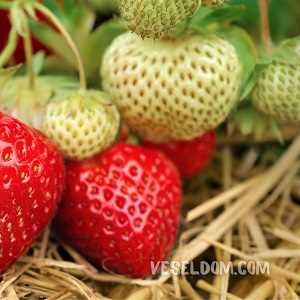
Apply a balanced fertilizer to the strawberry plants every 4-6 weeks during the growing season. This will provide them with the necessary nutrients for healthy growth and abundant fruit production.
Step 7: Controlling Weeds and Pests
Regularly remove weeds from the strawberry bed to prevent competition for nutrients and moisture. Additionally, monitor the plants for any signs of pests or diseases and take appropriate action to control them.
Step 8: Mulching
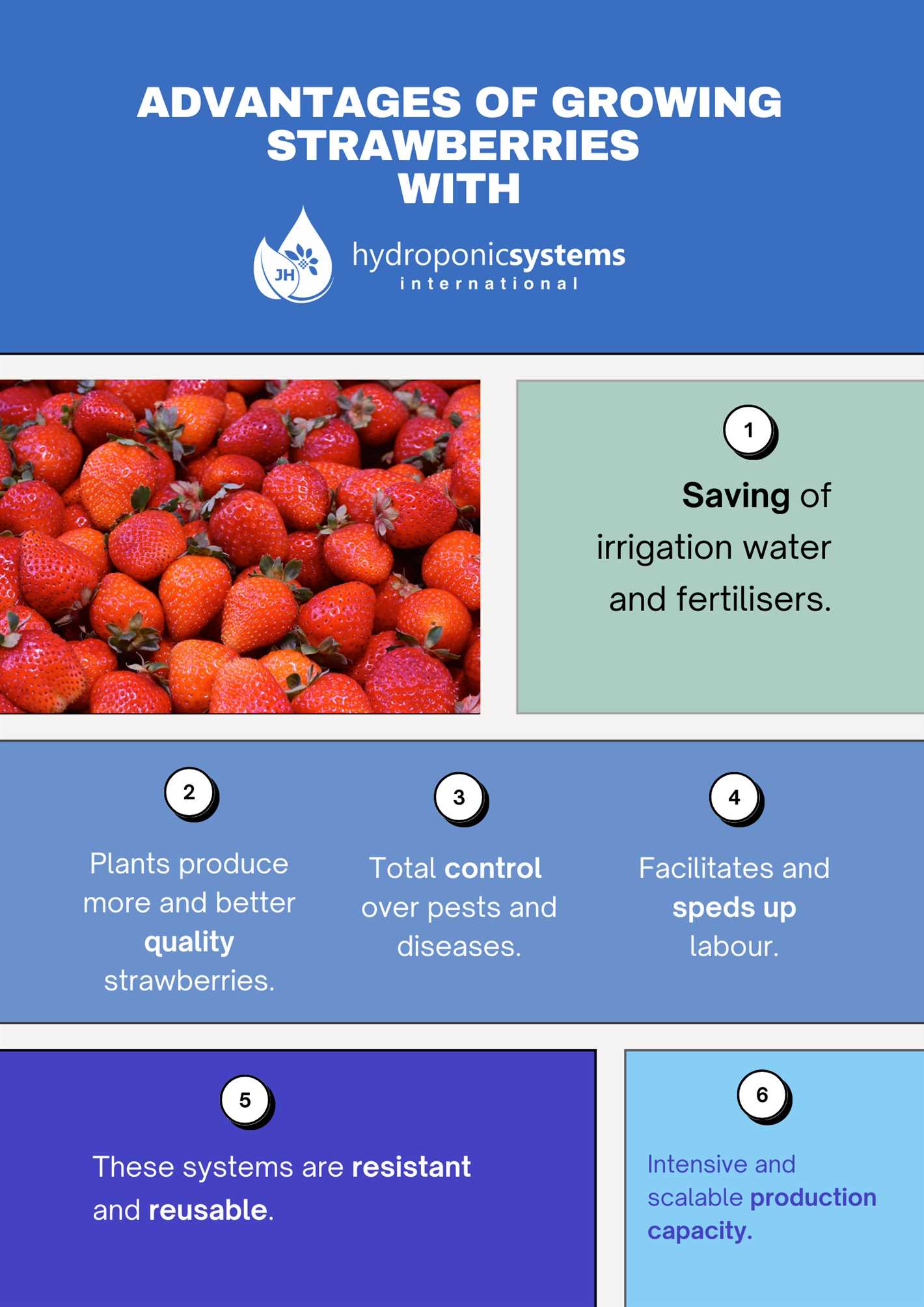
Apply a layer of mulch around the strawberry plants to help conserve moisture, suppress weed growth, and regulate soil temperature. Organic mulches, such as straw or wood chips, work best for strawberries.
Step 9: Pruning Runners
Strawberry plants produce runners, which are long, thin stems that spread out and form new plants. To maximize fruit production, regularly prune these runners by cutting them off or redirecting them into pots.
Step 10: Harvesting at the Right Time
Lastly, harvest your strawberries when they are fully ripe. This will ensure the best flavor and quality. Pick the berries in the morning, when they are cool, for maximum freshness.
By following these agrotechnical steps, you can improve your strawberry harvest and enjoy a bountiful supply of delicious, homegrown strawberries!
Increase Yields of Strawberries by 2-3 Times
Growing strawberries can be a rewarding experience, but it can also be frustrating when your harvest doesn’t meet your expectations. If you want to increase your strawberry yields by 2-3 times, there are a few agrotechnical techniques that can help.
1. Mulching
Mulching is a great way to improve strawberry yields. By placing a layer of organic material, such as straw or wood chips, around the plants, you can help retain moisture in the soil and suppress weed growth. Mulching also helps protect the strawberries from rotting when they come into contact with the soil.
2. Proper Plant Spacing
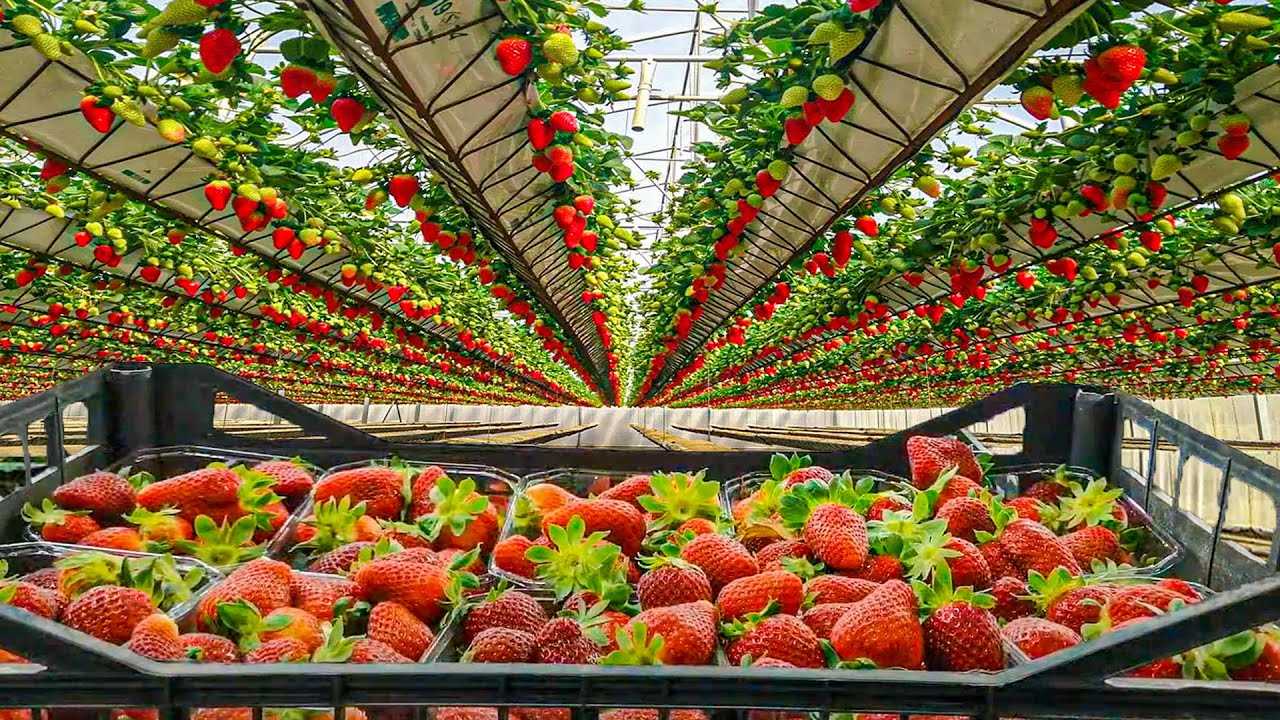
Strawberries need enough space to grow and receive adequate sunlight and air circulation. Planting them too closely together can lead to a crowded environment, which can make the plants more susceptible to diseases and pests. Be sure to provide enough space between each plant to promote healthy growth and maximize yields.
3. Regular Fertilization
Fertilizing strawberries regularly with a balanced fertilizer can provide them with the nutrients they need to grow and produce abundant fruits. Use a fertilizer specifically formulated for strawberries and follow the instructions on the package for application rates and timing. Additionally, consider using organic fertilizers to minimize chemical exposure.
4. Adequate Watering
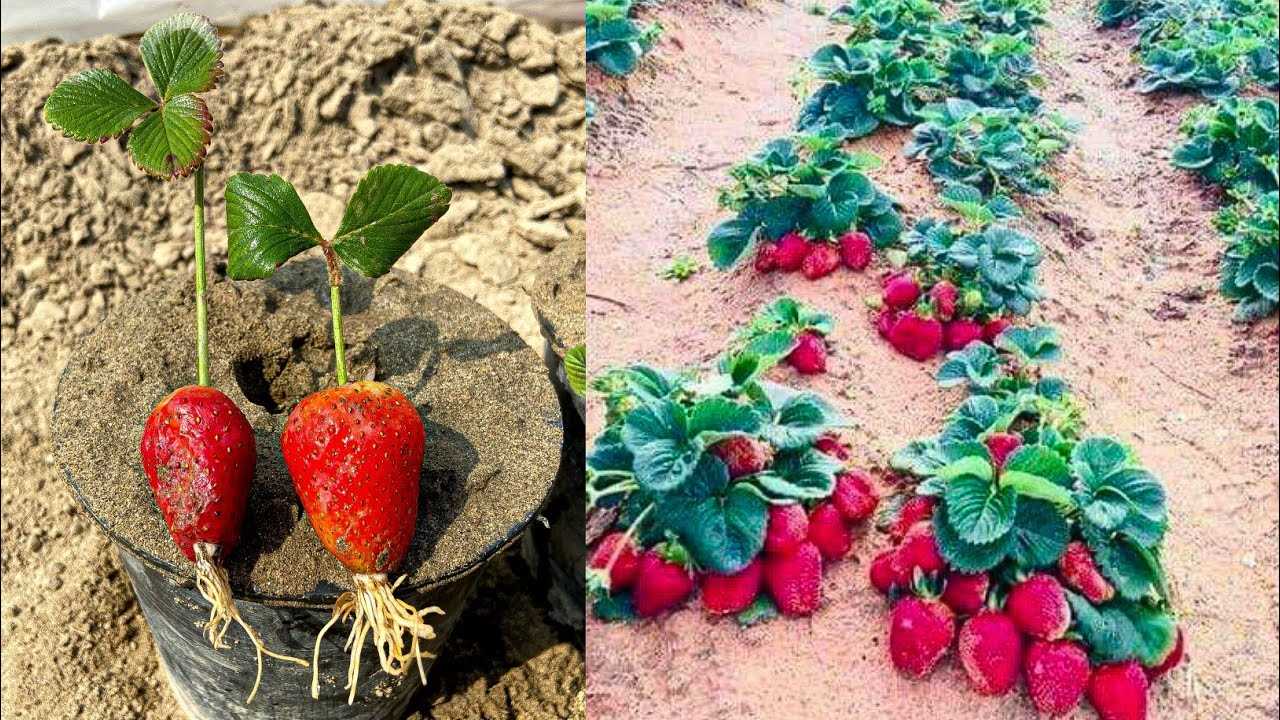
Proper watering is crucial for strawberry plants. They require consistent moisture, especially during the fruiting stage. Avoid overwatering, as it can lead to rot and disease, but make sure the plants receive enough water to keep the soil evenly moist. Consider using drip irrigation or a soaker hose to deliver water directly to the root zone.
5. Regular Pruning
Pruning helps promote healthier and more productive strawberry plants. Remove any runners or excess foliage to redirect energy towards fruit production. Regularly pruning also helps improve air circulation, which can reduce the risk of fungal diseases. Be sure to use clean and sharp pruning tools to prevent the spread of diseases.
6. Pest and Disease Management
Protecting your strawberry plants from pests and diseases is crucial for increasing yields. Regularly inspect your plants for signs of pests or diseases and take appropriate measures to control them. Consider using natural pest control methods, such as introducing beneficial insects or using organic sprays, to minimize chemical usage.
7. Proper Harvesting
Harvesting strawberries at the right stage of ripeness is essential for maximizing yields. Pick the strawberries when they are fully ripe to ensure optimal flavor and sweetness. Leaving overripe or rotting strawberries on the plants can attract pests and diseases, so be sure to remove them promptly.
By implementing these agrotechnical techniques, you can significantly increase your strawberry yields and enjoy a bountiful harvest. Remember to observe and adjust your techniques based on the specific needs and conditions of your strawberry plants.
Efficient Agrotechnical Technique for Improving Strawberry Harvest
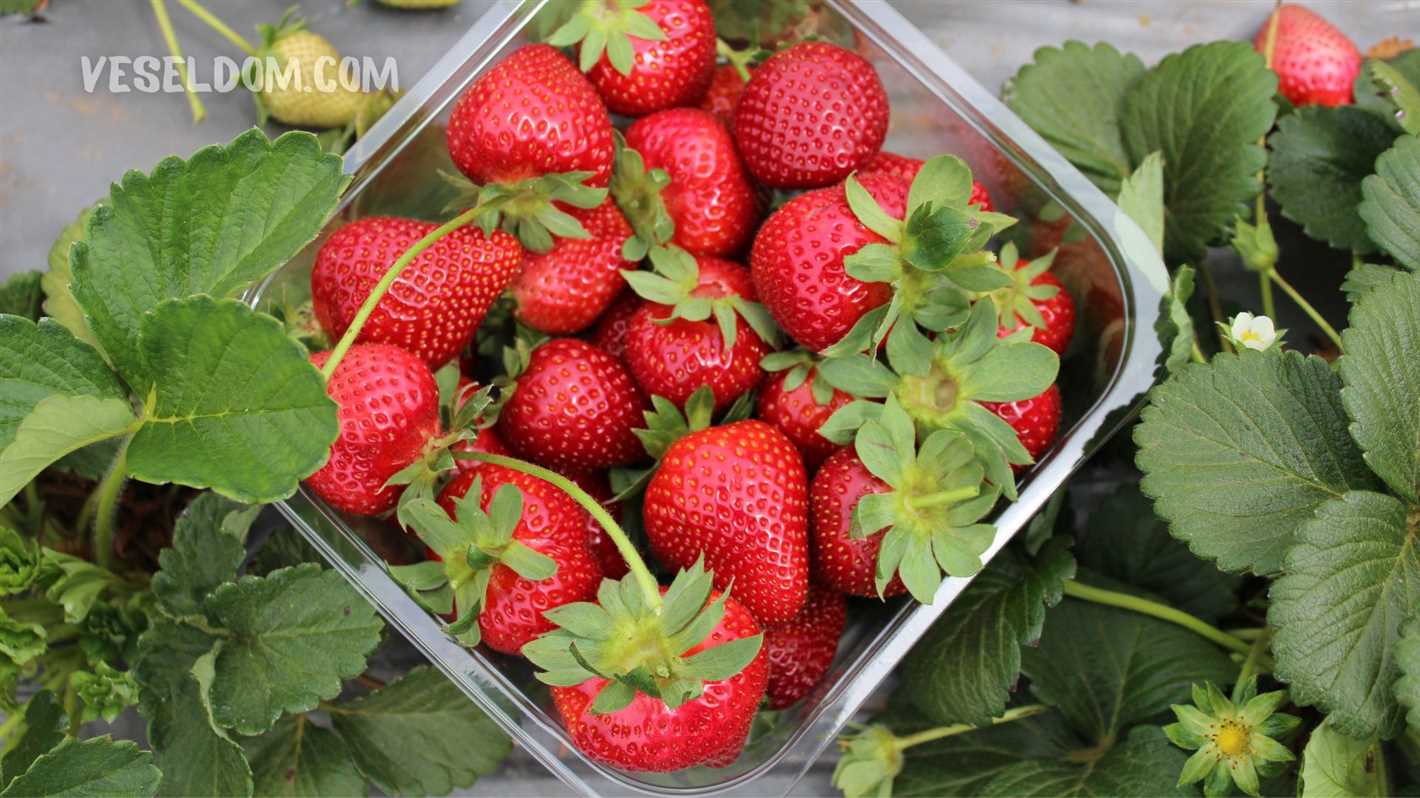
Growing strawberries can be a rewarding endeavor, but maximizing your harvest can be a challenge. However, with an efficient agrotechnical technique, you can significantly increase your strawberry yield and enjoy a bountiful harvest. By following these simple steps, you can boost your strawberry production by 2-3 times!
1. Proper Soil Preparation
Start by preparing the soil before planting your strawberry plants. Ensure that the soil is well-drained, rich in organic matter, and slightly acidic with a pH level of 5.5 to 6.5. Incorporate compost or well-rotted manure to improve the soil texture and fertility.
2. Selecting the Right Varieties
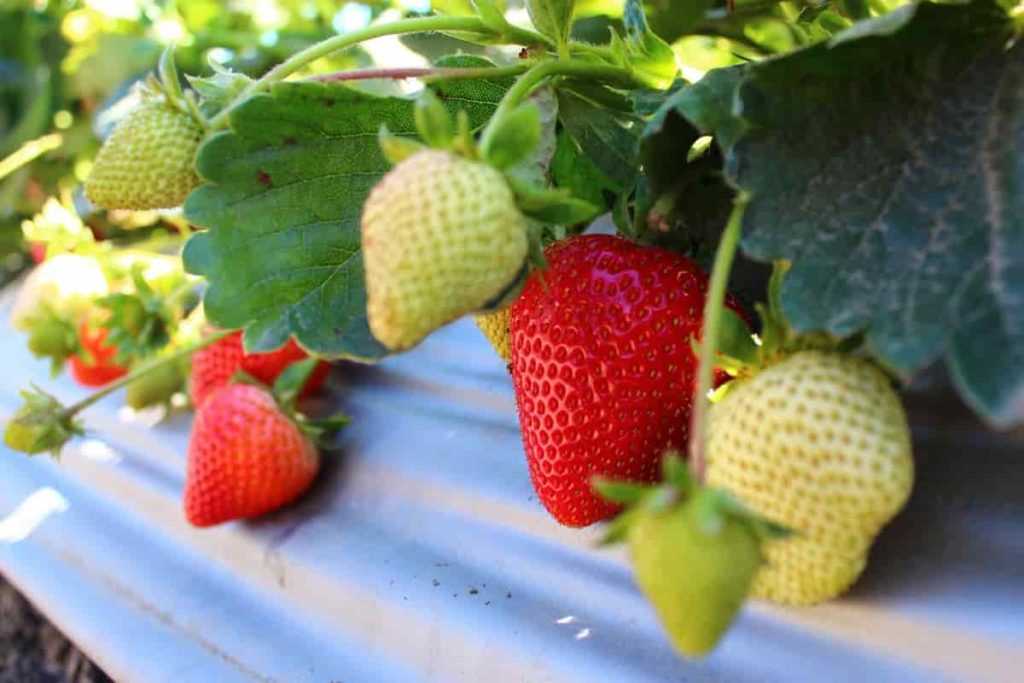
Choose strawberry varieties that are known for their high yields and resistance to common diseases and pests. Popular high-yield strawberry varieties include ‘Chandler’, ‘Seascape’, and ‘Sweet Charlie’. Contact your local agricultural extension office for recommendations specific to your region.
3. Planting and Spacing
- Plant your strawberries in early spring or late summer, when the temperatures are mild and the soil is workable.
- Space the plants properly, allowing enough room for growth and airflow. A spacing of 12-18 inches between plants and 2-3 feet between rows is recommended.
- Remove any runners or runners that may emerge, as these can limit the plant’s energy and hinder fruit production.
4. Adequate Watering
Strawberries require regular watering, especially during dry periods. Ensure the soil remains consistently moist, but not waterlogged, to prevent root rot. Consider using a drip irrigation system or soaker hoses to provide a deep, even watering directly to the plant’s roots.
5. Fertilization
Apply a balanced fertilizer specifically formulated for strawberries to provide essential nutrients. Follow the manufacturer’s instructions for application rates and timing. Over-fertilization can lead to excessive vegetative growth at the expense of fruit production, so be cautious.
6. Mulching
Mulching plays a crucial role in moisture retention, weed suppression, and temperature regulation. Apply a layer of organic mulch, such as straw or wood chips, around the strawberry plants, ensuring they are covered but not touching the crowns. This will help maintain soil moisture and prevent weed competition.
7. Pest and Disease Management
- Monitor your plants regularly for pests such as aphids, slugs, and spider mites. Take prompt action to control them using organic methods or approved insecticides when necessary.
- Identify and address any disease issues promptly. Common strawberry diseases include powdery mildew, gray mold, and verticillium wilt. Use disease-resistant varieties, practice crop rotation, and maintain good sanitation to minimize disease incidence.
8. Harvesting Tips
- Harvest strawberries when they are fully ripe, indicated by their bright red color and sweet fragrance.
- Pick strawberries by gently twisting the fruit and leaving the green caps intact. This helps prolong the shelf life of the harvested berries.
- Harvest regularly to prevent overripe berries and encourage continuous production.
By implementing these efficient agrotechnical techniques in your strawberry garden, you can enhance your yield and enjoy an abundant harvest of delicious, juicy strawberries!
Maximize Your Strawberry Yields with this Simple Agrotechnical Method
Introduction
Are you looking for a way to increase your strawberry yields without a lot of extra effort? Look no further – we have a simple agrotechnical method that can help you maximize your harvest. By following this technique, you can increase your strawberry yields by 2-3 times!
Step 1: Selecting the Right Variety
Choosing the right strawberry variety is crucial for maximizing yields. Look for varieties that are known for their high productivity and disease resistance. Some popular options include “Chandler,” “Albion,” and “Camarosa.” These varieties are known for their large, flavorful berries and high yields.
Step 2: Proper Site Selection
Strawberries thrive in full sun, so choose a location in your garden or field that receives at least 6-8 hours of direct sunlight per day. The soil should be well-drained and rich in organic matter. Avoid areas with heavy clay soil or poor drainage, as these can lead to root rot and other diseases.
Step 3: Preparing the Soil
Before planting your strawberries, prepare the soil by removing any weeds or grass. Incorporate organic matter, such as compost or well-rotted manure, to improve soil fertility and drainage. Mix in a balanced fertilizer to provide essential nutrients for the plants.
Step 4: Planting and Spacing
When planting strawberries, give them enough space to grow and spread. Set the plants about 12-18 inches apart in rows that are 3-4 feet apart. This spacing allows for proper air circulation, which helps prevent diseases and encourages better fruit development.
Step 5: Mulching
Apply a layer of organic mulch, such as straw or wood chips, around the strawberry plants. Mulch helps suppress weeds, conserve moisture, and maintain a more consistent soil temperature. It also protects the strawberries from direct contact with the soil, reducing the risk of rotting.
Step 6: Regular Watering and Fertilizing
Strawberries need regular watering to ensure proper growth and fruit development. Keep the soil consistently moist, but not waterlogged. Avoid overhead irrigation, as wet foliage can increase the risk of diseases. Additionally, provide regular fertilization throughout the growing season using a balanced fertilizer or a specially formulated strawberry fertilizer.
Step 7: Pest and Disease Control
Keep an eye out for common strawberry pests, such as aphids, slugs, and snails. Use natural pest control methods or organic pesticides to manage any infestations. Monitor your plants regularly for signs of disease, such as powdery mildew or gray mold. Remove affected leaves or fruits promptly to prevent the spread of disease.
Step 8: Proper Harvesting Techniques
To maximize your strawberry yields, harvest the ripe berries as soon as they are fully colored. Hold the stem of the berry gently, then twist and pull to detach it from the plant. Avoid picking unripe berries, as they won’t ripen further off the plant.
Conclusion
By following these simple agrotechnical methods, you can significantly increase your strawberry yields. Remember to choose the right variety, select a suitable site, prepare the soil, provide proper spacing and mulching, water and fertilize regularly, control pests and diseases, and harvest at the right time. With a little care and attention, you’ll be enjoying a bountiful strawberry harvest in no time!
Easy Way to Increase Your Strawberry Harvest by 2-3 Times
Introduction
Strawberries are delicious and nutritious fruits that are loved by people all over the world. If you are a strawberry lover and want to increase your harvest, we have a simple and effective agrotechnical technique for you. By following this technique, you can significantly boost your strawberry yields and enjoy a bountiful harvest.
Step 1: Proper Site Selection
The first step in increasing your strawberry harvest is to select the right site for planting. Choose a location that receives at least 6-8 hours of direct sunlight every day. Strawberries thrive in well-drained soil, so make sure the soil is loose, rich in organic matter, and has good drainage.
Step 2: Planting and Spacing
Plant your strawberry plants in early spring or late fall, ensuring that the soil temperature is around 60°F (15°C). Dig holes deep enough to accommodate the roots of the plants and space them about 12-18 inches apart. Plant them in rows with a distance of 3-4 feet between each row.
Step 3: Mulching
Apply a layer of mulch around the strawberry plants to help conserve moisture, suppress weeds, and regulate soil temperature. Straw, pine straw, or shredded leaves make excellent mulching materials. Ensure that the mulch layer is about 2-3 inches thick and keep it away from direct contact with the plant stems.
Step 4: Regular Watering
Strawberries have shallow roots, so they require consistent moisture to thrive. Water your plants regularly, keeping the soil evenly moist but not saturated. Avoid overhead watering as it can lead to diseases. Drip irrigation or soaker hoses are ideal for providing water directly to the roots.
Step 5: Fertilization
Feed your strawberry plants with a balanced fertilizer once every month during the growing season. Choose a fertilizer that is specifically formulated for strawberries and follow the instructions on the package for proper application. This will provide the plants with the necessary nutrients for healthy growth and increased fruit production.
Step 6: Pruning and Training
To maximize your strawberry harvest, regularly remove any old or diseased leaves and runners. This will improve air circulation, reduce the risk of diseases, and channel the plant’s energy into producing more fruit. Additionally, you can train the strawberry plants by gently tucking the runners into the soil, promoting the growth of new daughter plants for next year’s harvest.
Step 7: Pest and Disease Control
Monitor your strawberry plants regularly for pests and diseases. Common pests include slugs, aphids, and spider mites, while diseases like powdery mildew and gray mold can affect the plants. Use organic pest control methods whenever possible, such as handpicking pests or using insecticidal soap. For diseases, remove infected plants and apply appropriate fungicides as necessary.
Step 8: Harvesting
Finally, when your strawberries are ripe and red, it’s time to harvest! Gently pluck the berries from the plants, taking care not to damage the delicate fruit. Harvesting regularly will encourage the growth of new fruits. Enjoy your freshly picked strawberries right away or use them in various culinary delights.
Conclusion
By following these easy agrotechnical techniques, you can increase your strawberry harvest by 2-3 times and enjoy a plentiful supply of these delicious fruits. Remember to provide the plants with proper care, from site selection to regular maintenance, and you’ll be rewarded with a bountiful strawberry harvest.
Enhance Your Strawberry Yields with this Agrotechnical Technique
Strawberries are a delicious and popular fruit that can be grown in your own backyard. With this easy agrotechnical technique, you can enhance your strawberry yields and enjoy even more juicy berries.
The Technique: Vertical Strawberry Gardening
Vertical strawberry gardening is a method that involves growing strawberries in stacked containers or raised beds. This technique allows you to maximize your space and increase the number of plants you can grow.
To get started with vertical strawberry gardening, you will need:
- Stackable containers or raised beds
- Quality soil or a soil mix specifically formulated for strawberries
- Strawberry plants
- Irrigation system or watering can
The Benefits of Vertical Strawberry Gardening
By utilizing vertical gardening for your strawberries, you can enjoy several benefits:
- Increased Yield: Vertical gardening allows you to grow more plants in a smaller space, resulting in a higher strawberry yield.
- Improved Air Circulation: Stacking the containers or raised beds creates airflow around the plants, preventing diseases caused by excess moisture.
- Easier Harvesting: With the plants at different levels, it becomes easier to access and pick the ripe strawberries without stooping or bending down.
- Reduced Pest Damage: By lifting the plants off the ground, you can reduce the risk of pests and diseases that often attack strawberries.
How to Set Up Your Vertical Strawberry Garden
Follow these steps to set up your vertical strawberry garden:
- Choose a sunny location: Strawberries require at least 6-8 hours of direct sunlight daily.
- Prepare the soil: Ensure that your soil or soil mix is well-draining and rich in organic matter.
- Fill the containers or raised beds with soil: Leave enough space for the plants to grow and spread.
- Plant the strawberries: Space the plants according to the recommendations for the specific variety you are growing.
- Install an irrigation system or water manually: Strawberries require consistent moisture, especially during the fruiting period.
- Maintain the garden: Regularly check for pests, remove any weeds, and provide necessary care such as fertilizing and pruning.
- Harvest your strawberries: Once the berries are ripe, enjoy the bountiful harvest and share with family and friends.
Conclusion
Vertical strawberry gardening is a simple yet effective agrotechnical technique to enhance your strawberry yields. By utilizing vertical space and improving air circulation, you can enjoy a bountiful harvest of delicious strawberries. Follow the steps outlined above, and soon you’ll be enjoying an abundance of juicy berries straight from your own backyard.
Question-answer:
What is the agrotechnical technique mentioned in the article?
The agrotechnical technique mentioned in the article is called vertical gardening.
How does vertical gardening help to boost strawberry harvest?
Vertical gardening helps to boost strawberry harvest by maximizing space utilization and providing better growing conditions for the plants.
Can I use vertical gardening for other crops besides strawberries?
Yes, vertical gardening can be used for other crops like tomatoes, cucumbers, and beans to increase yields as well.
Does vertical gardening require any special equipment?
Vertical gardening can be done using trellises, stakes, or containers, depending on the specific needs of the plants being grown.
Are there any disadvantages to using vertical gardening?
One of the disadvantages of vertical gardening is that it may require more time and effort for maintenance and training the plants to grow vertically.
How long does it take to see the results of vertical gardening on strawberry harvest?
The results of vertical gardening on strawberry harvest can be seen as early as the next growing season.







